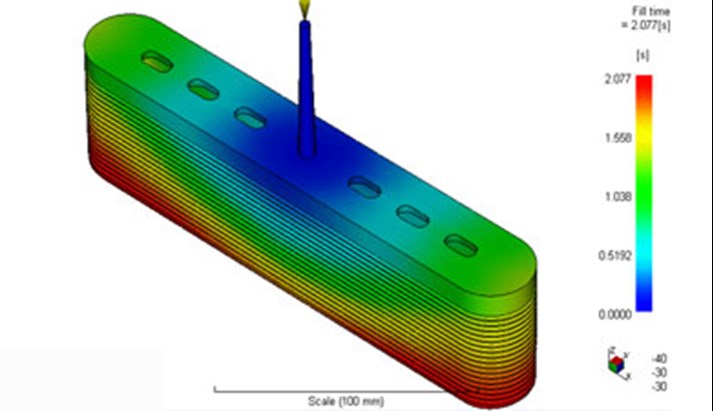Ceramic Injection Moulded (CIM) Components
The injection moulding of ceramics is a cost-effective and flexible process that provides solutions for design engineers requiring complex, repeatable ceramic components.
When a ceramic material has been chosen for a specific application, the geometry of the component has often been limited by the cost of shaping operations. Ceramic Injection Moulding (CIM) overcomes this issue by forming net shape parts in the tool.
The allows designs previously rejected as too difficult or expensive to manufacture using other traditional production techniques to be commercially feasible. The inherent hardness of ceramics means that manufacturing components with complex shapes by standard machining processes can be expensive. Features such as re-entrant angles, multi-shaped blind holes, screw threads, surface profiles, perpendicular holes, undercuts and intricate cavities are all possible using CIM technology. A multi-million-pound investment in CIM manufacturing technology at Stourport and separate facilities in our Martinscuro site enables MACOR to produce moulded ceramic components in volume for major international customers. This in turn has allowed production engineers and product designers to improve productivity and efficiency, lower manufacturing costs and improve product performance.
CIM components offer all the benefits associated with technical ceramics including wear resistance, corrosion resistance, thermal stability, superior hardness, high mechanical strength and dimensional stability. Physical features available through Ceramic Injection Moulding include undercuts, threads, blind holes and curves.
Components can be used in virtually any market, including industrial, petrochemical and medical applications.
Product Optimisation
Cavity Pressure Control
Jobs with high volume and tight tolerances demand a level of capability that can only be achieved with cavity pressure containment and control. Cavity pressure is the process variable that correlates most directly with part quality. MTC use this to monitor characteristics such as part weight, dimensions, flash, sinks, shorts and warp. When deviations are detected and contained, part quality to the customer can be assured. With cavity sensors, we have the ability to navigate without reference to the horizon. Conventional moulding is similar to a pilot flying in the clouds without even a compass.
Moldflow
Moldflow analysis allows optimisation of the part and mould design by adjusting areas such as gate positions, wall thickness and cooling parameters to help achieve success.
Moldflow simulation is usually conducted during the product design stage or the early stages of the tool design to eliminate many of the problems associated with commissioning an injection mould, before construction and major investment in the mould has even begun.

Read more about our CIM materials or for more information on how we produce our ceramic injection moulded products,Read contact us today.
